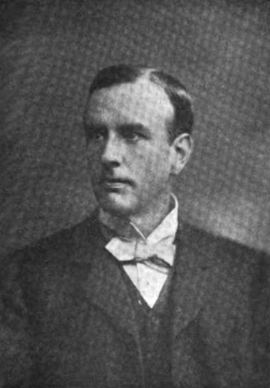Alan Gray facts for kids
Quick facts for kids
Alan Gray
|
|
|---|---|
 |
|
| Born | 23 December 1855 |
| Died | 27 September 1935 (aged 79) |
| Occupation | Organist, composer |
Alan Gray (born December 23, 1855 – died September 27, 1935) was a talented English organist and composer. He was known for his amazing musical skills and for creating many beautiful pieces of music.
Contents
Life and Career of Alan Gray
Alan Gray was born into a well-known family in York, England. His father, William Gray, was a lawyer and even served as the Lord Mayor of York. Alan's brother, Edwin Gray, also became Lord Mayor of York later on.
Early Life and Education
Alan Gray went to St Peter's School. He first studied to become a lawyer, just like his father, and qualified in 1881. However, he loved music more! He studied music with Edwin George Monk at York Minster, which is a very famous cathedral. After that, he went to Trinity College, Cambridge to continue his music studies. There, he met the famous composer Charles Villiers Stanford.
Director and Organist
From 1883 to 1893, Alan Gray was the Director of Music at Wellington College. He helped many students learn and enjoy music during this time.
In 1893, he moved back to Cambridge. He became the organist at Trinity College and also led the Cambridge University Musical Society. He took over these roles from his former teacher, Charles Villiers Stanford. One of his students at Trinity College was Ralph Vaughan Williams, who later became a very famous composer himself! Alan Gray stayed at Trinity College until 1930.
He also did important work helping to prepare music for the Purcell Society, which focuses on the music of the great English composer Henry Purcell. In 1922, he published The Shropshire Songbook with Nicholas Gatty. This book contained arrangements of folk songs.
Personal Life and Legacy
People who knew Alan Gray described him as a "magnificent organist" and a "skilful improviser." This means he was not only great at playing the organ but also very good at making up music on the spot! He was also known as "long Alan" because he was very tall, about 6 feet 6 inches! He had many interests beyond music, showing he was a very smart person.
In 1887, he married Maude Vickers. They had three sons: Basil, Maurice, and Edward. Sadly, during the First World War, Alan Gray faced a very difficult time. He lost two of his sons, Maurice and Edward, towards the end of the war. This deeply affected him. He passed away in Cambridge at the age of 79.
Alan Gray's Music
Alan Gray wrote many different kinds of music. He composed music for church services, including pieces for Morning and Evening Prayer and the Holy Communion service for the Church of England. Some of his well-known church pieces include:
- The Magnificat and Nunc dimittis in F minor for double choir (1912).
- A setting of Holy Communion in G.
- Several anthems (songs for choirs).
He also created a collection of descants for hymn tunes in 1920. Descant is a melody sung above the main tune of a hymn. Many of these descants are still used today in hymn books like Common Praise.
Other Compositions
Beyond church music, Alan Gray wrote:
- Five cantatas (long pieces for chorus and orchestra) based on religious and non-religious stories.
- Chamber music (for small groups of instruments).
- Instrumental music.
- Organ music, including four sonatas.
During the First World War, his experiences deeply influenced his music. He composed a set of three partsongs called 1914, using poems by Rupert Brooke. He also wrote an Elegy (1915) for organ and strings to remember composer William Denis Browne, who died in the war.
Perhaps his most famous piece is What are these that glow from afar? (1928). He wrote this anthem, using words by Christina Rossetti, to honor his sons who were lost in the war. It includes a beautiful melody from an old church tune called Jesu dulcis memoria.
Recordings of His Music
Some of Alan Gray's music has been recorded so people can still listen to it today:
- The Magnificat and Nunc dimittis has been recorded by the Westminster Abbey Choir.
- The 1914 partsongs – 'Peace', 'The Dead', and 'The Soldier' – have been recorded by Truro Cathedral Choir.
- Organ Sonata No 2 has been recorded by John Kitchen.
List of Compositions
Here are some of the musical pieces Alan Gray composed:
- The Widow of Zarephath, cantata (1888)
- Organ Sonata No 2 (1890)
- Arethusa, cantata (1892)
- Easter Ode, choral (1892)
- The Legend of the Rock Buoy Bell, cantata (1893)
- Fantasia in D minor for organ (1894)
- Festival Te Deum (1895)
- The Vision of Belshazzar, cantata (1896)
- A Song of Redemption, cantata (1898)
- Andante and Allegro for piano trio (1903)
- Odysseus in Phaeacia, cantata (1906)
- Evening Service in F minor (Magnificat and Nunc dimittis) for double choir (1912)
- 1914, partsongs (1914)
- Elegy for organ and strings (1915)
- Recessional for organ (1916)
- Andante grazioso for organ (1922)
- What are these that glow from afar?, anthem (1928)
- Requiem
- Piano Quartet
- String Quartet
- Violin Sonata
- Adagio and Toccata for organ
- Fantasy in G minor for organ
- Four Organ Sonatas
- Four idylls for organ
- Ground for organ
- The Little Organ Book in memory of Parry
- Variations for organ
- Sets of short preludes and postludes

